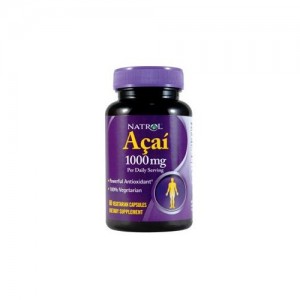
Recent Blog Posts
January 6, 2010
Book Tour Dates for Women’s Home Workout Bible
I have finalized the events for the Tri-State area portion of my book tour. Here are the dates:
Saturday, January 9 at 2 p.m. Borders Books, 162 E Main St, Mount Kisco, NY 10549, 914-241-8387
Friday, January 15 at 7 p.m., Barnes and Noble, 2518 South Rd., Poughkeepsie, NY 12601, 845-485-2224
Saturday, January 16 at 2 p.m., Borders Books, 1499 Post Rd, Fairfield, CT, 06824, 203-256-1619
Wednesday, January 20 at 7:30 p.m., Barnes and Noble, 380 Walt Whitman Rd, Huntington Station, NY, 11746, 631-421-9886
Dates for other cities will be announced shortly. Hope to see you at one of the events!
Stay Fit!
Brad
January 5, 2010
The Ugly Side of Infomercial Fitness Purchases
You’ve no doubt seen them. Fast-talking pitchmen hawking “must have” products over the airwaves. The ads used to be relegated to late-night TV, but now they’re on morning, noon, and evening. It’s a multi-billion dollar industry that keeps getting bigger — which is unfortunate for you, the consumer.

As reported by the New York Post, Consumer Reports recently issued a scathing indictment of products sold through infomercials. In a nutshell, they found that most are simply junk. This is particularly true of fitness equipment, which are notorious for making exorbitant claims that have no basis in reality. Not all infomercial-based fitness products are bad, mind you, but the good ones are few and far between.
Understand that infomercials rely on impulse purchases. The producers of the infomercials craft the ad to make you feel as though you need the product now. Before and after photos are used to suggest amazing weight loss and muscle development (read the fine print to see that “results are not typical” — and usually have nothing to do with the product). Celebrity endorsements often help to lend credibility (the celebrities are well-paid for their endorsement and what does an actor really know about fitness, anyway?). The ads invariably culminate by making an “irresistible” offer, throwing in freebies that you have no use for and sometimes cost additional shipping. And then of course there’s the ubiquitous “money back guarantee.” Great, no risk, right? Think again. Not only is it a major hassle to return a product, the consumer also is responsible for return shipping costs. Moreover, by the time you figure out that the unit is crap, the money back guarantee has expired.
My advice is to stay clear purchasing any fitness product you see on TV without checking it out first. Jot down the name of the product and do a search on the internet. Read unbiased reviews (I’m in the process of adding more “As Seen on TV” reviews to my site, Lookgreatnaked.com). See if any complaints are lodged against the company selling the product or the product itself. And if everything checks out and you still want to purchase the unit, evaluate your options. A trick used by many infomercial companies is to keep the price of the unit modest and then charge outlandish shipping fees that are far in excess of actual costs. Instead of purchasing direct, you might be able to get it in a store or through a reputable e-tailer such as Amazon.com. Bottom line: Be an educated fitness consumer and you won’t get burned by hucksters looking to make a quick buck.
Stay Fit!
Brad
January 3, 2010
Acai Berry: Help or Hype?
You’ve probably heard the claims about the magical powers of acai berries. Really, how can you avoid them? A Google search of “acai berry” turns up almost 5 million entries, with purported benefits ranging from expediting weight loss, enhancing energy, increasing libido, staving off heart disease, preventing aging, fighting cancer, improving digestion, acting as sleep aid, and alleviating arthritis. Whew! About the only thing the acai hasn’t been credited with yet is curing baldness!

For those who don’t know, the acai is a small, round South American berry that resembles a purple grape when ripe. It gained prominence after a dermatologist, Dr. Nicholas Perricone, tabbed it as a “superfood” on the Oprah Winfrey Show. Ever since, the spam emails with “acai” in the subject heading haven’t stopped flooding my inbox.
Don’t get me wrong, there is little doubt that the acai berry possesses beneficial properties. It’s rich in free-radical quenching antioxidants as well as other vitamins and minerals, and is a fairly good source of fiber. However, so are numerous other darkly colored berries including blackberries, blueberries, and strawberries — all of which are significantly less expensive than acai. And yes, the acai also contains some monounsaturated fats, but the amount is relatively inconsequential — you’d have to eat large quantities just to get the equivalent found in a tablespoon of olive oil.
As for the purported health benefits of the acai berry, a Pubmed search of peer-reviewed research failed to reveal a single study supporting any of the previously mentioned claims. Not one! Bottom line: This is merely another case of unscrupulous hucksters seizing on media-generated publicity with unsubstantiated, hyped-up health-related promises for a product. It’s really no different than the practices of the snake oil salesmen back in the 1800’s — only now the scams are being perpetrated on slickly designed websites rather than from the back of a covered wagon.
To put things in perspective, there certainly is nothing wrong with consuming acai berries as part of your diet. As with most fruits, they provide a good source of nutrients which can help to improve health and well-being. But until research shows otherwise, that’s where the benefits begin and end. Be wary of sham websites selling various acai-based formulas intended to promote weight loss or rejuvenate your body. You’ll only end up disappointed with your results…and lighter in the pocketbook, as well.
Stay Fit!
Brad
January 1, 2010
Keep Your New Year’s Resolution By Setting Goals
Happy New Year!
Yep, another year has come and gone. And with the turn of the new year, I’m sure many of you have made a resolution to get into shape and/or lose weight. If so, great! Deciding to do something is the easy part. Unfortunately, the majority who make fitness-related resolutions stop working out within a few months. So how do you go about ensuring that you don’t become a fitness statistic? Set goals!
Those who’ve read my books know that I’m a huge proponent of setting goals as part of an exercise program. In fact, it’s the first thing you should do before ever setting foot in the gym. Setting goals is the best way to stay focused on why you’re expending all that sweat and effort. It helps to maintain motivation over the long haul, and has proven to increase exercise adherence.
Here’s a short course on making sure your goals are up to speed. With respect to setting goals, I advocate the SMART acronym. Namely, goals should be Specific, Measurable, Attainable, Realistic, and Timely. Break down long term goals into shorter term goals of four to six weeks. Once you accomplish your short-term goals, set new short- term goals. And once you accomplish the long-term goal, set a new long-term goal and again break it down into shorter-term goals. Finally, make sure you write down your goals. Committing goals to paper makes them more tangible, and has been shown to promote a greater sense of obligation to follow through and accomplish them.
Stay Fit!
Brad
December 30, 2009
Fox News Channel Appearance
I am set to appear on Fox News Channel this Sunday, January 3. The topic: New Years Weight Loss Tricks for January 2010 – 10 Tips to Jumpstart Your Weight Loss. The segment is scheduled to air sometime in the 5 pm hour. Hope you can tune in!
Stay Fit!
Brad
December 22, 2009
Fat Burning with Interval Training
For those who have read my books or attended one of my seminars, you’ll know that I’m a big proponent of performing interval training to optimize fat loss. I was quoted in the current issue of More Magazine as stating that it’s the most effective cardio technique for slimming down. So true!

As noted in the article, the benefits of interval training have been borne out by research. Studies repeatedly show that it has significantly greater effects on reducing body fat levels, producing up to a nine-fold reduction in skin fold measurements. Best of all, interval training requires about half the workout time compared to traditional steady-state cardio training.
The concept behind interval training is simple: intersperse bouts of high-intensity cardio with lower intensity cardio. Pretty much any aerobic modality can be used for interval training. For example, you can choose jogging as the low-intensity cardio and running as the high intensity cardio. Alternatively, you can combine skipping rope with jumping rope. Or you can intersperse jumping jacks with squat thrusts. The possibilities are pretty much endless.
If you’re a beginner, keep the intervals on the longer side. A 1:4 high/low ratio is generally a good starting point. Try to gradually narrow the interval until you’re training at a 1:1 ratio. 20 to 30 minutes a session, three days a week is all you need to do to see terrific results. Be careful that you don’t overdo it, though. The high-intensity nature of the routine can easily lead to overtraining if you’re overzealous. As is often the case, less can be more!
Stay Fit!
Brad
December 21, 2009
Staten Island Advance Article…
Today’s issue of the Staten Island Advance did a nice feature on my new book. Here’s a link:
Stay Fit!
Brad
December 15, 2009
In the News…
Check out the the latest edition of the Chicago Daily Herald, which has some home workout tips from my new book, Women’s Home Workout Bible.
Stay Fit!
Brad
December 14, 2009
To Stretch or Not to Stretch
The Miami Herald ran an interesting article questioning the benefit of stretching before a workout. For the most part, the article makes some excellent points.

Contrary to popular belief, a large body of research shows that stretching prior to exercise has no effect on decreasing injury risk. Yes, improving flexibility can help in injury prevention depending on the activity. Tight muscles have been implicated as a potential cause of various injuries, and improving flexibility can help to reduce this possibility. However, it doesn’t matter when the stretching is done. The only concern is that you achieve adequate range of motion for the task you want to perform. As the Nike ad says, “Just do it!”
Most importantly, stretching is best performed after a good warm-up. This helps to reduce joint viscosity, ensuring that muscles and connective tissue are sufficiently prepped to endure passive and/or active lengthening. Some light aerobic activity performed for 5 or 10 minutes will accomplish this task well. Take home message: Don’t stretch a cold muscle.
Interestingly, there actually is some evidence showing that stretching before a workout can have a negative impact on exercise performance. This is most applicable to activities requiring high-force output, such as low rep weight training, sprinting, and jumping. I won’t bore you with the details on the how’s and why’s, but bottom line is that various indices of power have been shown to be reduced when a forceful activity is performed immediately following a stretching session.
However, caution needs to be used when applying much this research to general fitness-oriented workouts. First, most of the studies in question used excessive stretching protocols, in some cases spending upwards of 30 minutes stretching a single joint. This has limited applicability to the stretching protocols used by the majority of fitness enthusiasts.
Moreover, the studies are specific to high-power activities. This has questionable correlation to the moderate-to-high repetition resistance training performed by many gym goers, and virtually no correlation to sub-maximal cardiovascular exercise. More research is needed to achieve a better understanding of the subject. This is yet another instance that shows the importance of reading the actual research rather than simply listening to the media’s interpretation of science.
Stay Fit!
Brad
December 6, 2009
Burn the Fat Blog
I wanted to make everyone aware of an excellent fitness blog, Burn the Fat. The blog is written by Tom Venuto, who really knows his stuff about exercise and nutrition. I had the pleasure of meeting Tom at a recent publicity event and he is one of a select few fitness pros who bases his philosophy on research rather than unsupported hype. It’s always refreshing to see a trainer who is committed to evidence-based practice, and Tom embodies this approach. His blog is definitely worth a read…
Stay Fit!
Brad





 Entries (RSS)
Entries (RSS)



